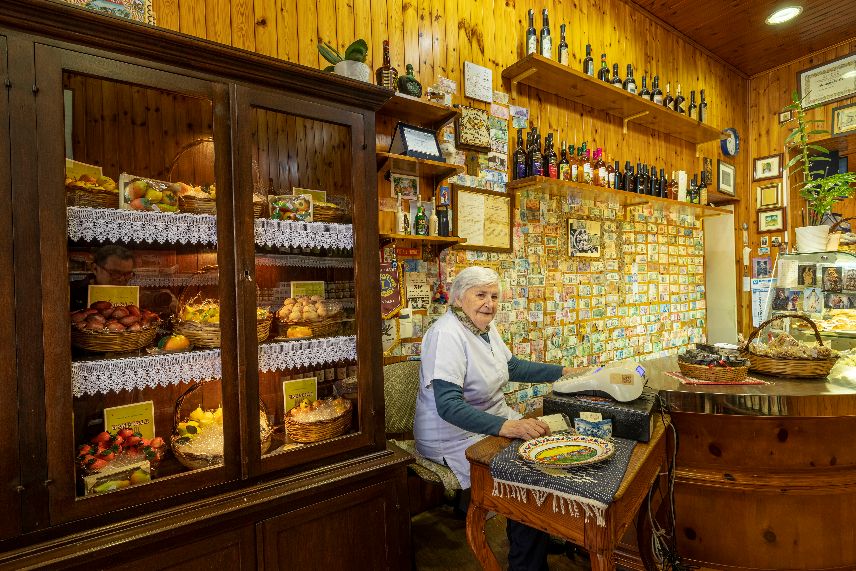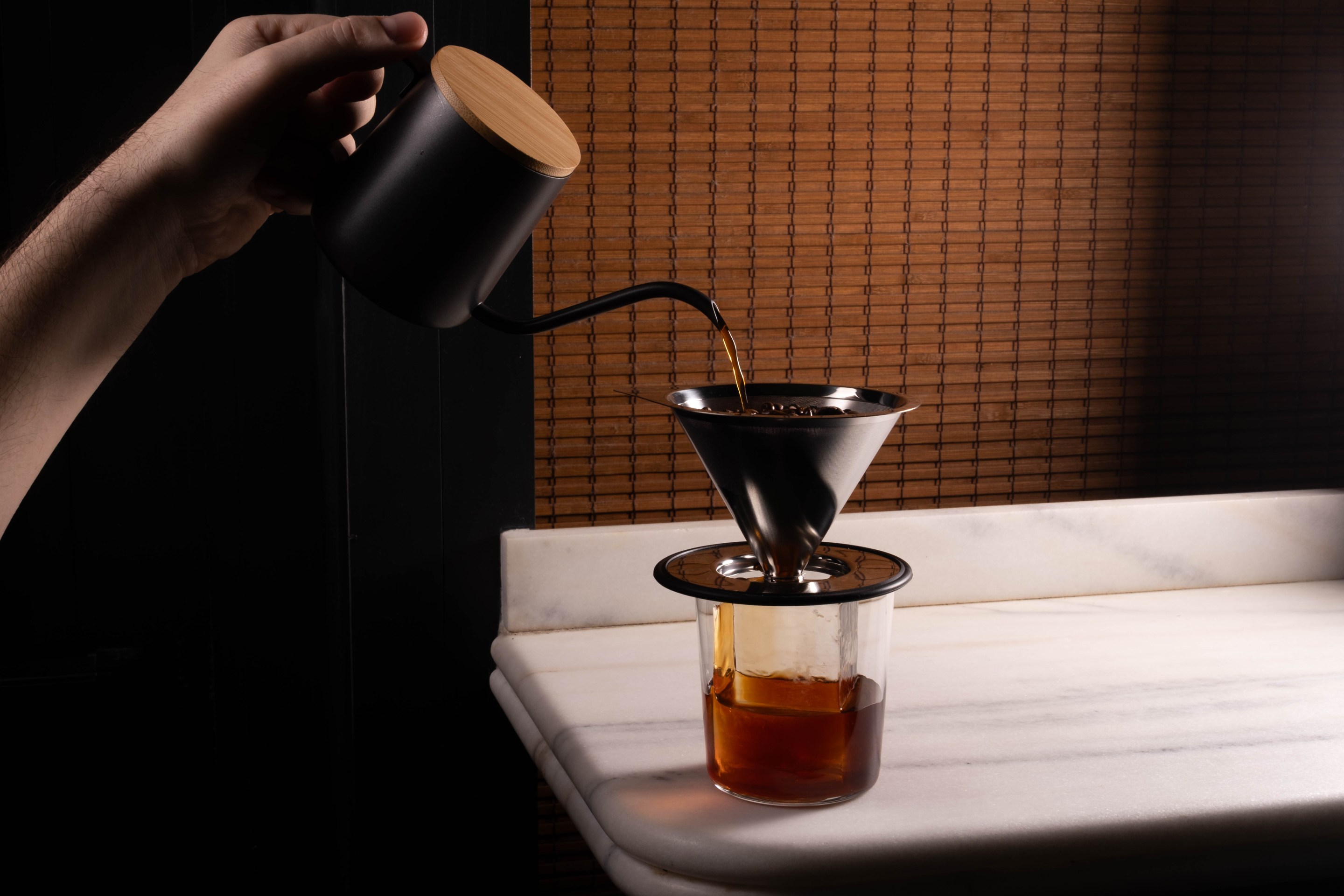As a child growing up in a lay institute in Sicily, in a period of great scarcity following WWII, Maria Grammatico was told to put down a milk biscotti she had picked up to eat from the batch made at the San Carlo Monastery in Erice.
Today, she owns one of the most famous pasticcerias in Sicily, located in the very same mountain town where she once shed tears over a cookie and the hardship of the cards that life had dealt her. Maria Grammatico’s story is a true tale of trials and tribulations and how the soul can overcome the insurmountable in the pursuit of a better life.
Maria was 11 years old when her father died of a heart attack and her mother, responsible for five children and pregnant with a sixth, made the hard decision to send Maria and her six-year-old sister to live at the San Carlo Monastery in Erice. There, they were provided with the very basics and led a life of work, seclusion and prayer, partaking in the Sicilian Convent tradition of producing and selling pastries as a means of sustenance.
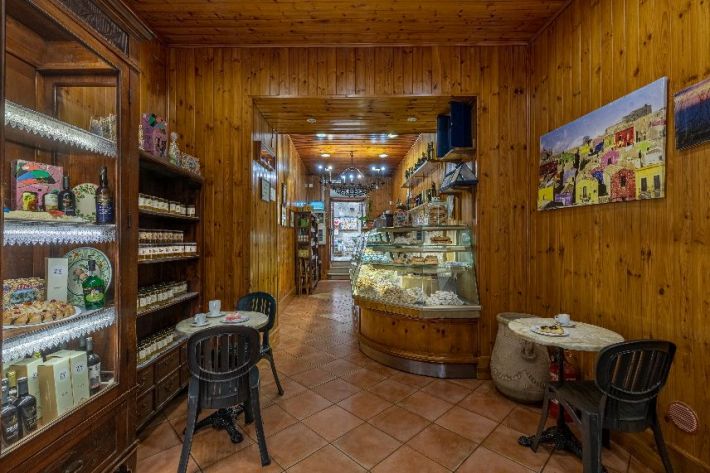
For the first three years, Maria, still just a kid, scraped pans and learned by watching, whenever she could, the art of Sicilian pastry making. As all the other girls at the Monastery, she took turns with chores in addition to the pastry production related activities, spending hours on kitchen or laundry duty, cleaning the ovens or scrubbing the stairs. Making pastries for holidays and special occasions was the only respite of the monotony of life at San Carlo.
Marzipan, made from scratch, was the star ingredient in the pastries of the monastery, and the process of converting almonds to paste was laborious. Almonds grown in nearby farms were shelled and hand-peeled for days at a time, then ground in a hand-cranked grinder, cooked in a sugary syrup, and, finally, kneaded with rolling pins until a smooth paste formed. Once ready, this Pasta di Mandorla (almond paste) was used to craft elaborate sweets, and in the absence of a written recipe, watching and doing equated learning.
Frutta di Martorana (marzipan fruits) were molded and then hand painted to mimic small versions of the real deal and was a tradition served on All Souls’ Day. Marzipan hearts filled with citron jam were a staple at Christmas, and so were Biscotti al Fico, cookies filled with dried figs, honey, and orange peel. Almond Lambs, made for Easter, were one of the most elaborate dolci produced at San Carlo with each curl of “wool” painstakingly crafted by hand.
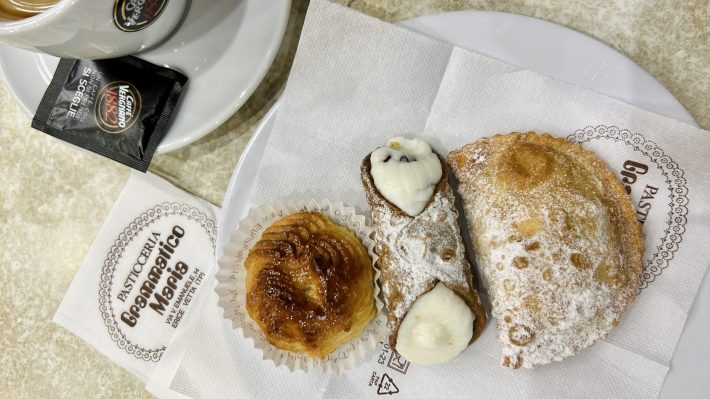
Cookies made of milk, sesame, or anise filled the shelves of a cabinet and were some of a few pastries available without pre-order as consuming the delicious Sicilian specialties was a treat reserved for special occasions in an area still suffering the remnants of a war. The kids at the convent, whose lives revolved around making pastries for other people’s celebrations, rarely enjoyed these delicacies themselves, being allowed to eat only the cookies that had burnt.
At 22 years old, Maria decided to leave San Carlo without a single possession to her name but with the knowledge she had collected and saved in the recipe books of her memory of the ancient tradition of Sicilian convent pastry making. Her path to gastronomic stardom started with three kilos of almonds, a hand-cranked nut grinder, a wood-burning oven and the apprenticeship she endured by necessity, rather than choice, within the walls of the convent.
Her determination and tenacity for growing her business eventually paved the way for La Pasticceria di Maria Grammatico becoming synonymous with Erice, an enchanting ancient mountain town overlooking Trapani on the west coast of Sicily, and drawing visitors from all over the world.
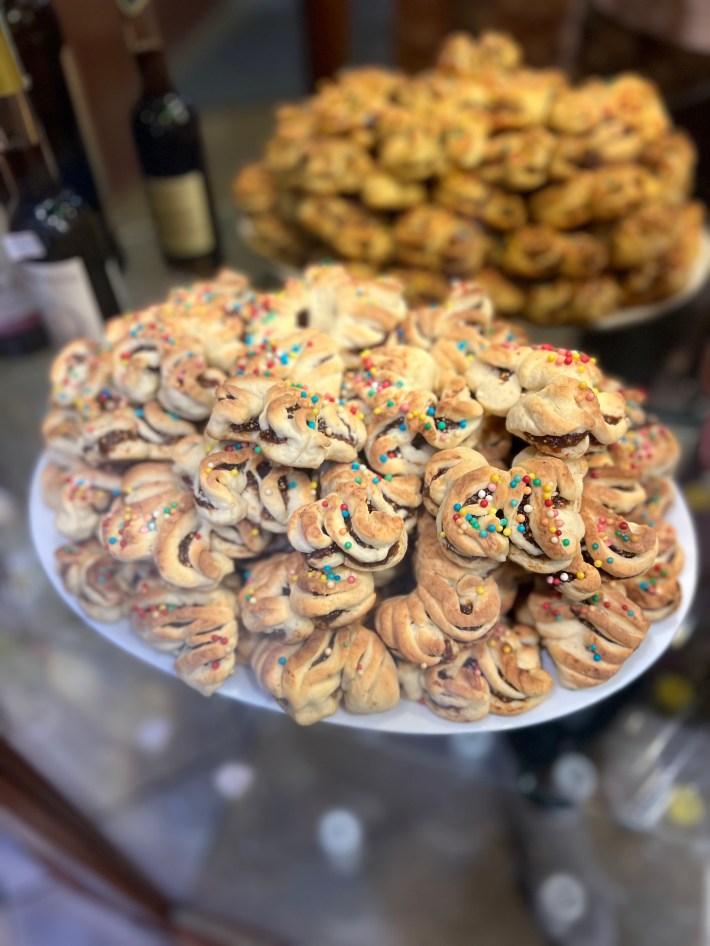
I met Maria completely by chance at the door of her laboratorio, the Italian name for pastry kitchen. In today’s popular term, I’d say I “manifested” my encounter with her. I had done the trek by train from Palermo to Trapani, and up a cable car to Erice, just so I could visit her pastry shop, captivated by her story of transcending difficulty to bring dreams to reality and an intrigue to taste her famous almond pastries.
As a pastry chef, I am always enamored with kitchens. As I peeked through screen doors, inside the laboratorio, she was on the way out. I uttered “Lei e’…?” (Are you…?), and to my surprise she replied “Si," and so started a brief but memorable exchange between us. With my heart already full, I then entered her pastry shop to satisfy my stomach and professional curiosity.
Wooden cabinets lined the walls full of baskets with colorful Frutta di Martorana, jars of homemade jam, and gift boxes with her name imprinted on them. A large pastry case showcasing Maria’s culinary talents and Sicilian tradition was at the heart of the shop with a few tables scattered throughout. Dozens of platters of perfectly arranged dolce, made with almonds from Avola and pistachios from Bronte, filled the case, as well as Maria’s favorite treat to munch on, il Genovese, a pastry made of shortcrust dough and filled with custard. Cannoli, Cassata, Torrone, Pasta Frolla (tarts) filled with Nutella, apricot, ricotta, or amarena completed the jaw-dropping line up.
I sat at one of small round, marble tables by the back with an espresso and a plate with Genovese, Torta Paradiso, and a cannolo, the latter always a must when in Sicily, knowing I was able to enjoy these treats in this shop thanks to an 11-year-old girl who turned her tribulations into triumphs.
Recently, over email, I had an opportunity to ask Maria what she’d tell her 11-year-old self. In her own words: “A me stessa di 11 anni, direi di non abbattermi mai e seguire sempre I sogni. Se una cosa la si desidera tanto, con la forza di volonta’, la tenacia e la pazienza si riesce sicuramente a raggiungere l’obiettivo” (“To my 11-year-old self, I would say to never give up and always follow your dreams. If you want something so much, with willpower, tenacity and patience you can surely achieve the goal”)
